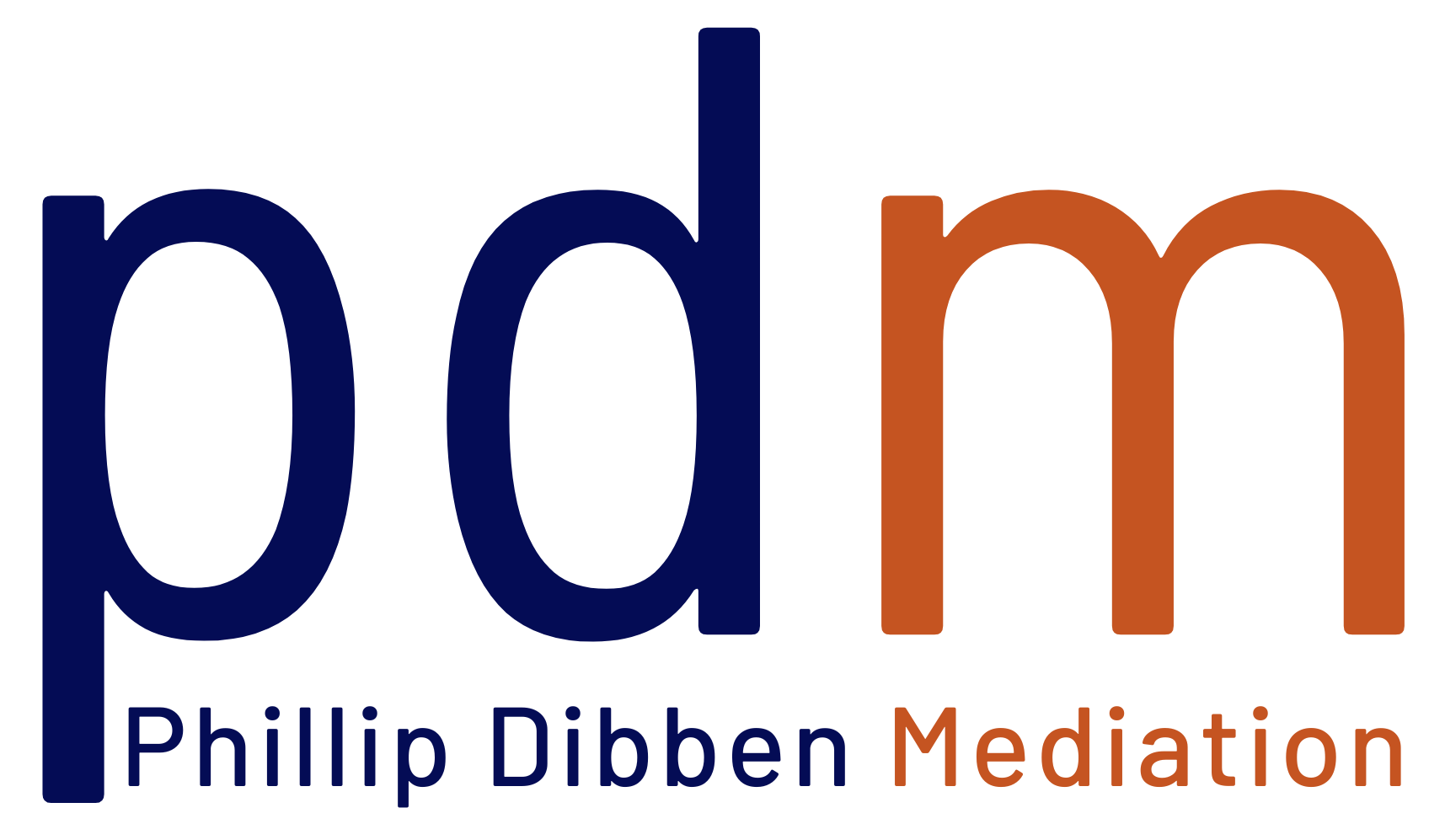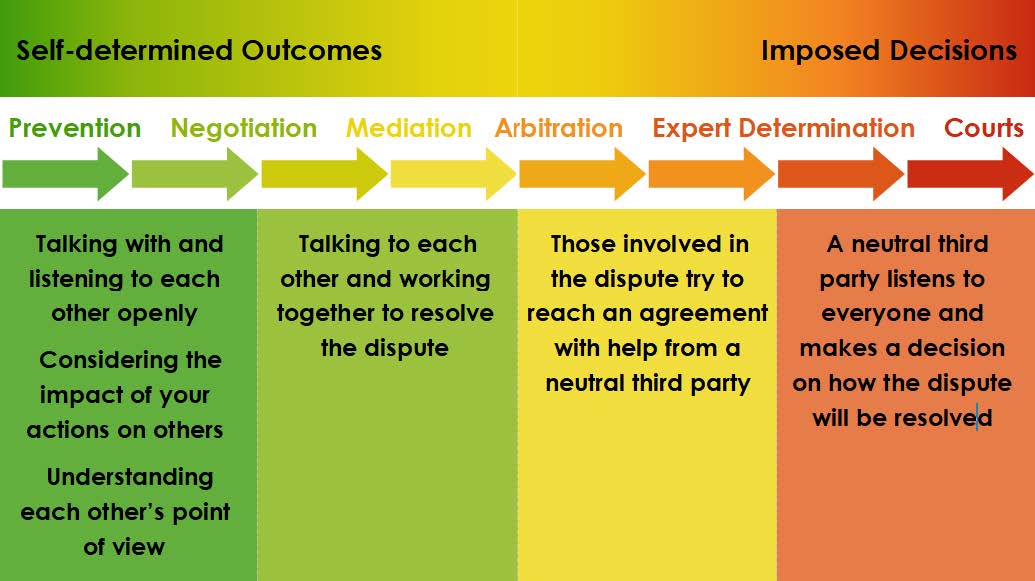Dispute Resolution Process Conflict Resolution, or Mediation, is a multi-disciplinary, analytical, problem-solving approach to conflict that enables the participants to work collaboratively towards a solution. (NADRAC, Your Guide to Dispute Resolution, 2012).
Simply put, mediation is the process of attempting to resolve a dispute or conflict when direct negotiation, either with or without lawyers, has failed. It may be undertaken voluntarily, as part of an existing contractual agreement, or under court order. Mediation is one of the final steps where the disputing parties maintain control of the outcome. After this, such as if the matter goes to court, the final decisions are made by someone else.
Mediators establish the context and causes of a conflict to help design the best process for facilitating a resolution. The mediator brings to the table an alertness for any particular complexities in the conflict which may cause each side to perceive things differently. Their key skill is to be able to summarise each party’s narrative with the aim of bringing the narratives closer together so they can negotiate/collaborate effectively and arrive at a solution.
The key principles of Mediation are:
- Aim for a win-win outcome. This would normally have already happened prior to entering mediation if it were going to, so a mediator will seek to find the blockages. If it still can’t be resolved the mediator will get the parties to consider the consequences of not reaching an agreement, then use that as a basis to bring the parties forward towards a resolution. This is what I like to refer as “The Best Worst Outcome” – you may not be getting everything that you want but it is far better than reaching no agreement at all.
- Appreciate individual differences; respect and empower others. Everyone has a voice at the table. Each party gets to make some opening remarks which the mediator will summarise then use to identify the problem and matters for discussion. Generally, each party will separate into their own teams to explore and further define the problem so they can consider their options.
- Look for common goals and shared values. Coming together and working collaboratively each party will share their thoughts and ideas for progression. It is from here that the hard work begins in finding the common ground that can become a starting point.
- Agree on actions. The ultimate aim of mediation is to walk away with a clear path towards progressing or resolving the dispute. It can be an agreement to the steps that will occur following the mediation and include what will happen if there are further roadblocks in the process.
If you would like to find out more about our services, please contact phillip@pdmediation.com.au
References:
- Australian Disputes Centre Training Guide, 2021
- NADRAC (AUSTRALIAN DISPUTE RESOLUTION ADVISORY COUNCIL), Your Guide to Dispute Resolution, 2012





